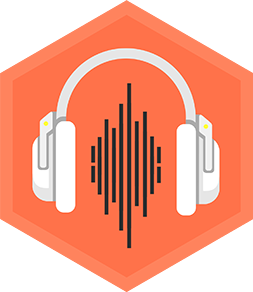Record a Chord Progression on Bandlab
Record a simple four-chord progression on BandLab using virtual instruments or guitar, learn tempo and layering, then export and share your song.



Step-by-step guide to record a chord progression on BandLab
Step 1
Sign in to BandLab or create a free account so you can start a new song.
Step 2
Create a new project in BandLab to get a fresh workspace for your recording.
Step 3
Set the project tempo to 100 BPM using the tempo control so your chords stay in time.
Step 4
Add a new Instrument track if you will use virtual sounds or add an Audio track if you will record your guitar.
Step 5
Choose four chords for your progression and write them down (for example C G Am F).
Step 6
Press Record and play or play the chords so you record the four-chord progression for four bars.
Step 7
Add a second track for layering such as a bass or pad instrument to support your chords.
Step 8
Record a simple bass or pad part that follows the same chord progression to make the song fuller.
Step 9
Add a drum loop or simple beat on a new track to give your song a steady rhythm.
Step 10
Use the mixer to adjust volume levels and panning so each instrument can be heard clearly.
Step 11
Export or download your mix as an MP3 or WAV file from BandLab so you have a finished audio file.
Step 12
Go to DIY.org and upload your exported audio with a short description of what you learned and share your song.
Final steps
You're almost there! Complete all the steps, bring your creation to life, post it, and conquer the challenge!


Help!?
I don't have a guitar or external mic — what can I use instead to follow the 'Add an Instrument or Audio track' and 'record your guitar' steps?
Use BandLab's free Instrument track (virtual keyboard or guitar amp simulator) or the BandLab mobile app with your phone's built-in microphone to record instead of an external guitar or mic.
My recording sounds delayed or nothing records when I press Record — what should I check from the 'Set the project tempo to 100 BPM' to 'Press Record' steps?
Ensure the correct input is selected or the Instrument track is chosen, arm the Audio track for recording, check BandLab's microphone permissions and input gain, and reduce buffer/latency or move closer to the mic so your four-bar chord take is captured cleanly.
How can I adapt this activity for younger children or older kids based on the 'Choose four chords' and 'Add a second track' instructions?
For ages 5–8, simplify to two easy open chords and use a ready-made drum loop while an adult presses Record; for ages 9–12 keep the four-chord progression and add a simple bass track; for teens add extra layers, experiment with tempo, and do the full mix and export.
What are simple ways to personalize or improve the song after the 'Use the mixer' and 'Export' steps?
Personalize by recording a short melody or vocal on a new track, try different bass or pad sounds and drum loops, use panning and effects in the mixer to shape the sound, and create a short description and cover text when you upload the exported MP3/WAV to DIY.org.
Watch videos on how to record a chord progression on BandLab
How to make beats on BandLab | A step-by-step guide to building your first beat in Studio
Facts about music production for kids
⏱️ Tempo is measured in beats per minute (BPM) — changing the BPM can make the same chords feel slow and dreamy or fast and energetic.
🎹 BandLab launched in 2015 and lets you record, mix, and share music for free right from your browser or mobile app.
🎸 Guitarists often use easy open chords (like G, C, D, Em) to play simple four-chord progressions that sound great together.
🎚️ Layering multiple tracks (chords, bass, melody, and percussion) is how you turn a single idea into a full-sounding song.
🎧 Many pop songs use the same four-chord progression (I–V–vi–IV), which is why lots of tunes instantly sound familiar!
How do you record a chord progression on BandLab?
What materials do I need to record on BandLab?
What ages is recording on BandLab suitable for?
What are the benefits of recording chord progressions on BandLab?


One subscription, many ways to play and learn.
Only $6.99 after trial. No credit card required



